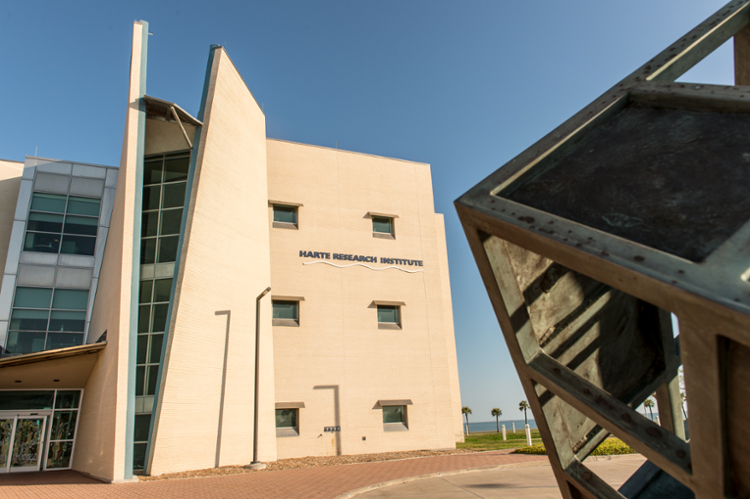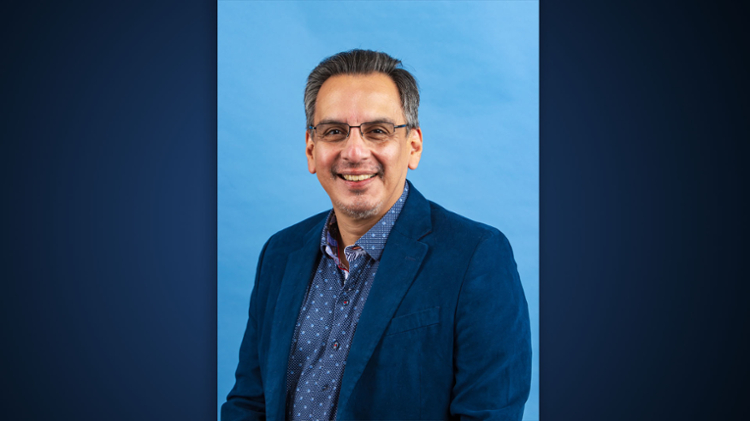Texas A&M-Corpus Christi Inspires Young Scientists with OCEANS Program
CORPUS CHRISTI, Texas – On Tuesday afternoons, the peaceful and still waters of Laguna Madre are set upon by a gaggle of rambunctious, eager middle-schoolers in kayaks — all poised to observe, collect, and learn from their surroundings. These budding young citizen scientists are participants of the OCEANS (Oceanography, Conservation, Ecology, Arts, Nature, and Stewardship) program — a recent recipient of a $471,921grant from the prestigious National Academy of Science, and the most recent product of the passion-driven, highly successful, collaboration between Texas A&M University-Corpus Christi, Flour Bluff Independent School District (FBISD), and Friends of Redhead Pond and Environmental Stewardship Association (FRP).
Located on the Encinal Peninsula of Corpus Christi, and in possession of 60 acres of Environmental Education Area, FBISD includes a diverse student population — of whom 43.9% identify as Hispanic. With 54% of all FBISD students living in economically disadvantaged homes, and with no institutionally-coordinated curriculum to consistently integrate STEM topics between kindergarten and eighth grade, 44% of these students have been categorized as being “at risk” of not continuing their education.
Fortunately, a series of successful collaborations between TAMU-CC Assistant Professor of Marine Biology Dr. Dara Orbach, and Flour Bluff educator and marine advocate Katie Doyle, has led to Flour Bluff students being in the unique position of undertaking fieldwork under the guidance and mentorship of TAMU-CC experts and students.
This new partnership has resulted in the inception of the OCEANS program, a 30-month pilot program involving up to 400 Flour Bluff students in place-based learning, enhancing environmental literacy and STEM interest. Local community leaders and TAMU-CC STEM students, overseen by the three project leaders and a post-doctoral researcher, will mentor these younger students in scientific practices and conservation techniques. The program includes an art component, physical activities like field trips, water sports, and beach cleanups, as well as citizen science and community engagement.
Orbach notes that this partnership between TAMU-CC, FBISD, and FRP has incredible promise to make meaningful impact in the lives of underrepresented students, and opens the door to a new generation of marine scientists and environmental stewards.
“How great would it be if these middle-schoolers, who might not have even stayed in school, develop a love of the ocean, and think, well, just down the road at Texas A&M-Corpus Christi is a school where I can pursue this? There is a great potential to develop the future changemakers, and to cultivate community pride in this unique environment,” Orbach said.
Alayna McClaren, a Flour Bluff seventh-grade student, credits the OCEANS program with fostering a new love of science.
“It is so interesting to learn about keeping the wetlands healthy and to change people’s minds about littering,” McClaren said. “We get to measure the water and air quality of the wetlands, as well as explore it in kayaks and by fishing.”
Aidan Callahan, a Flour Bluff seventh-grade student in the OCEANS program, hopes to study marine biology in college.
“In the OCEANS program, I have learned so much about the behaviors of sea animals that I had never thought about before, like the octopus,” Callahan said. “I am looking forward to learning more from the university students; it would be great to study with Dr. Orbach one day.”
Doyle has observed that her students’ involvement in the program has resulted in character development that could potentially influence the trajectory of their lives.
“The growth that we see in our students’ knowledge, their leadership, and their competence has been astronomical,” Doyle said. “We have great statistical data showing that not only have our students grown from taking part in these activities, but that students across the country that we have collaborated with via Zoom have developed their knowledge about the ocean and conservation, too.”
For TAMU-CC Honors Program student and environmental science major, Taylor Rausch ’26, the practical approach of the program highlights its ingenuity.
“I would have loved to take part in a program like this in grade school,” Rausch said. “It is encouraging to see that the students are very motivated to learn about their surroundings and how to take care of their environment. This curiosity will allow multiple generations to benefit from the program, and I have no doubt that they will teach me a lot at the same time.”
Under the direction of Dr. Larisa Ford, President of FRP, observations and outcomes of the OCEANS program will be incorporated into a draft Environmental Stewardship and Literacy Plan for the Flour Bluff community and decision-makers to take action to safeguard the area’s ecosystem.
“Conservation is something that occupies the thoughts of many young people now, and community leaders need to know how much they want to help — especially in their own backyards, and yet, they are often overlooked,” Ford said. “We want to stop this disconnect.”
The team also believes there is potential for other schools in unique ecological areas to adapt the program for their students.
The research presented in this article is supported by the Gulf Research Program of the National Academies of Science, Engineering, and Medicine under the award number of SCON-10000750.
The content of this article is solely the responsibility of the authors and does not necessarily represent the official views of the Gulf Research Program or the National Academies of Science, Engineering, and Medicine.


















